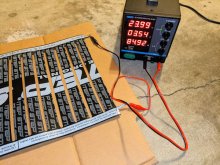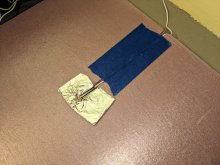BMurray
New Member
- Joined
- Mar 13, 2021
- Messages
- 14
Hello! New to this forum. Designing a medium sized off-grid home for Southwestern Colorado. Great sun exposure, lots of land, good budget.
Looking for you input.
I'm seeing if I can't come up with a combination of solar energy collection and passive storage during the day and heat release during the night. Goal is to limit "moving" / active parts. During the day 24v solar panels will directly power 24v heating elements embedded in the concrete slab. After dark the slab would radiate stored heat into the conditioned crawlspace and into the house. This would not be the primary heat source.
Or I might place the heating mats under a PCM (Phase Change Material) that melts during the day absorbing heat, then solidifies after dark releasing that heat. Wiki page on Phase Change Material. Example of the Infinite R PCM I am considering. Here is a 4 min video that describes the basics of PCM. This technology is getting close to the point where it is cheaper to store thermal energy than electrical energy. I'm talking to various manufactures right now to see what I can buy in small quantity.
So far I have started building a test bed: I bought 10 feet of STEP Warmfloor a Dr Meter DC Power Supply, and a thermometer with remote sensor. Have a variety of wire, connectors and fuses around the garage.
See attached PDF spec sheet for the 24v heating mat I am using. It has a unique feature in that the semi-conductive polymer becomes less conductive as it heats up. Manufacture says this results in a very stable and efficient heat output. Not sure, will test. Specs say heat output is 9 watts per foot at 32f/0c and decreases to less than 7 watts at 86f / 30c.
Lots of 120v and 240v heating matt solutions are available this is the only commercially available mat I could find that uses low voltage and that the manufacturer promotes for solar use. If anyone has seen other options let me know.
I would like to hear any input you all have.
Thanks!
Bruce
Looking for you input.
I'm seeing if I can't come up with a combination of solar energy collection and passive storage during the day and heat release during the night. Goal is to limit "moving" / active parts. During the day 24v solar panels will directly power 24v heating elements embedded in the concrete slab. After dark the slab would radiate stored heat into the conditioned crawlspace and into the house. This would not be the primary heat source.
Or I might place the heating mats under a PCM (Phase Change Material) that melts during the day absorbing heat, then solidifies after dark releasing that heat. Wiki page on Phase Change Material. Example of the Infinite R PCM I am considering. Here is a 4 min video that describes the basics of PCM. This technology is getting close to the point where it is cheaper to store thermal energy than electrical energy. I'm talking to various manufactures right now to see what I can buy in small quantity.
So far I have started building a test bed: I bought 10 feet of STEP Warmfloor a Dr Meter DC Power Supply, and a thermometer with remote sensor. Have a variety of wire, connectors and fuses around the garage.
See attached PDF spec sheet for the 24v heating mat I am using. It has a unique feature in that the semi-conductive polymer becomes less conductive as it heats up. Manufacture says this results in a very stable and efficient heat output. Not sure, will test. Specs say heat output is 9 watts per foot at 32f/0c and decreases to less than 7 watts at 86f / 30c.
Lots of 120v and 240v heating matt solutions are available this is the only commercially available mat I could find that uses low voltage and that the manufacturer promotes for solar use. If anyone has seen other options let me know.
I would like to hear any input you all have.
Thanks!
Bruce







